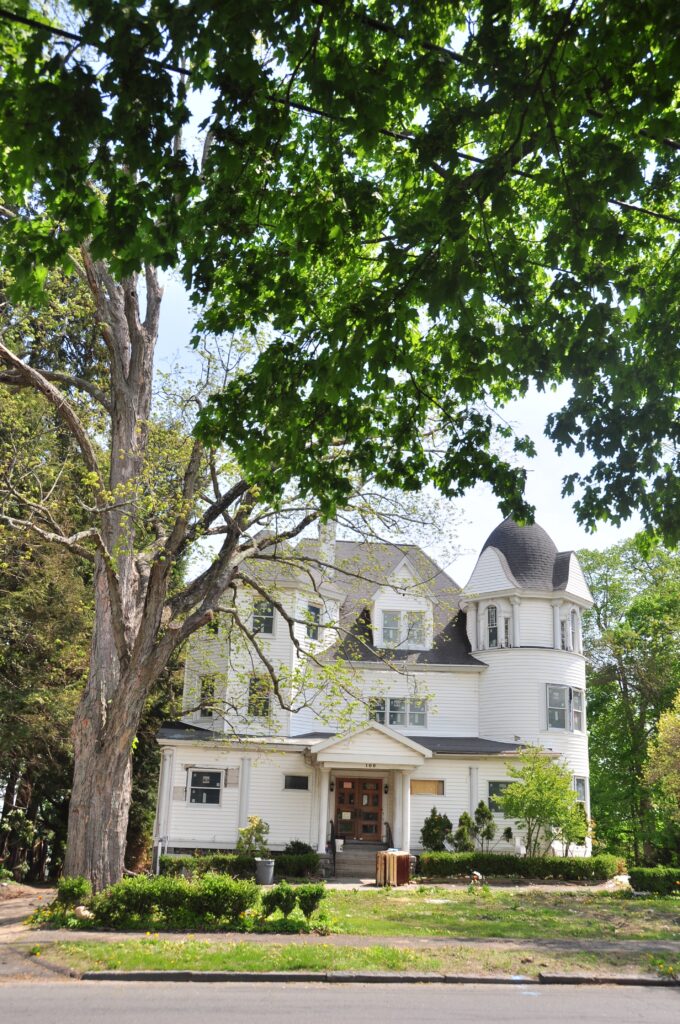Click here to browse our Real Estate Agent Directory and contact top-rated agents in your area
Trees are an excellent source of shade and mature landscaping. They add depth to design and, in many cases, can add value to a property. But who is responsible for fallen tree removal?
Most homeowners love having trees as a part of their yards. However, trees can also present issues for property owners. For example, when storms or high winds come through, and a tree falls, it can be damaging and potentially dangerous. In other incidents, a pine tree’s falling pine cones can be hazardous, or their positioning would be inconvenient.
As much as we love having touring beauties as a part of our landscape, sometimes they have to go. Tree removal may vary depending on where you live and who is responsible for the property in question. In most cases, if the tree that has fallen is on your private property, then you are responsible for removing it and making repairs. But let’s dive into the complexities of tree law, who pays for tree removal, when you need to get insurance involved, and the general maintenance requirements of tree ownership.

Tree laws change by state and jurisdiction.
If you’re a new property owner, likely, you have rarely, if ever, considered the laws that govern trees. Each state and its jurisdictions have different laws and regulations that govern what trees can be removed, how many trees can be taken down, who can take them down, and who is responsible for the tree removal.
Tree removal is such a hot issue that many states have legal guides on handling tree disputes. So before you rely entirely on this article, it’s essential to understand your local regulations. You should check your state laws but also county and city laws as well.
Disputes over who is responsible for tree removal are common. For example, sometimes an owner might think that if a neighbor’s tree falls on their property, across the property line, it’s their neighbor’s responsibility, while others believe it’s theirs. In this article, we will discuss the general policies that govern tree ownership, tree removal costs, and who is responsible for fallen tree removal.
>>MORE: Finding a top real estate agent is easy with FastExpert
Tree removal is often a matter of safety.
Falling trees and falling branches can be hazardous. Every year people are killed by falling trees, and even more are injured. Sometimes it’s not a question of if a tree needs to go; if the tree is creating a safety hazard, it either needs to be trimmed back or entirely removed.
Trees can become a safety hazard for many reasons, including leaning over a structure, putting pressure on power lines, or dying and at risk of falling over. A dead tree in a precarious situation can be just one major storm away from causing severe property damage or bodily harm.
The danger caused by falling trees and branches is underrated and under-acknowledged by many property owners. Homeowners must regularly check on the trees or engage a professional to conduct a tree inspection on their property to look for signs of decay or damage.
A professional arborist can identify diseased, dying, or dangerous trees. While removing a dead or precariously positioned tree might be costly, imagine the financial and personal strain it would cause if it fell on your house – or worse.
Do you own the tree?
Property lines have specific rules that are true across all jurisdictions. A tree that sits on a property line is considered common property. If a tree sits entirely on your property, you are the tree owner responsible for its maintenance and removal as needed. That means that both neighbors share ownership of the tree.
Having shared ownership can be helpful if both parties are in a like mind about the tree’s removal. It means that the tree removal cost can be shared and the tree taken down without conflict. However, if one party wants the tree removed and the other doesn’t, you have a problem. Alternatively, if one party wants the tree removed, and the other party can’t afford to pay for tree removal, there could be another potential dispute.

Don’t plant trees on your property line.
Prevent tree disputes with your neighbor by not planting trees on your property line or even near the property line(if possible). If you choose to plant a tree on your property line, you must get your neighbor’s permission, as the tree will become common property as soon as it is fixed to the land.
Furthermore, any plant or tree will grow. Even if a newly planted tree doesn’t sit on a property line today, it could infringe on the nearby property as the tree grows. Sometimes this is unavoidable, but as a preventative measure, a property owner should be considerate and strategic about where they plant new trees. Ideally, trees should be planted several feet from a property line.
What do you do if a neighbor plants a tree on your property line?
Conflict between neighbors can escalate quickly and make living in your home or owning a property challenging and even uncomfortable. For example, suppose your neighbor plants a tree on your property line or even on your property without your permission. In that case, it’s best to try to resolve the conflict with a conversation by giving them the benefit of the doubt.
Perhaps the neighbor didn’t realize where the property line was. Alternatively, they could have assumed that you would love the new addition. Often, a friendly conversation is the best resolution. However, if the conflict continues, you can contact your neighborhood Home Owners Association (if you have one) or reach out to the city. When the dispute escalates, you might need to engage a lawyer with tree law knowledge or specialization to mediate the situation.
Buying a property that requires tree removal.
Tree removal can be a small or massive undertaking, depending on the property, number of trees, types of trees, region, and more. If you’re not well versed in tree removal and its associated costs, you might want to engage a professional arborist of professional tree removal service before you sign a purchase agreement.
Are you allowed to remove fallen trees?
Tree removal isn’t a given. Fortunately, a fallen tree can be removed at an owner’s discretion. Dead trees are also typically not subject to regulation. But there can be limitations on tree removal.
>>MORE: Landscaping Ideas to Improve Curb Appeal and Sell Your Home
What trees can you remove?
If you are purchasing real estate that requires tree removal, such as vacant, forested land which you plan to build on (whether a small cabin or several homes), you must know what trees you are allowed to remove and an approximate cost for their removal. Even if it’s private land, a local jurisdiction will have a say on tree removal. Tree removal can completely eat up a development budget or, worse, prevent it from ever breaking ground. Local tree removal services are often your best resource for whether or not you’re allowed to remove a tree. Illegal tree removal can lead to hefty fines. Before you are locked into a contract, compare tree removal estimates to see if they fit your budget.
Buying a property with a dangerous tree.
If you’re buying a property and either you identify a dangerous tree or your inspection does, you want to bring it up with the current property owner. Just as you would with any defect found in a home inspection report, you can use dangerous trees as a tool for negotiation. Tree services can provide a cost estimate which you can ask the seller to pay for, elect to pay yourself, or use to renegotiate the purchase price.
The dangerous tree is on the neighboring property.
Perhaps an inspection uncovers a dangerous tree, but that tree belongs to a neighbor, which presents another level of complexity to the situation. The neighboring property owner is responsible for their property, including the tree. If the neighbor’s tree fell, they would be held liable for damages. In most jurisdictions, whoever the tree belongs is who needs to bear the cost of tree removal or tree trimming required to ensure safety.
Have a Question?
Ask a licensed real estate agent here.
If you’re not yet the property owner, you can either choose to undertake that communication with the neighbor yourself or request the seller do so. However, if you proceed with a property purchase and work with the neighbor to remove the tree yourself, be aware that you could end up having a problem if the neighbor chooses not to address the tree. The last thing you want to do with a new neighbor is enter a dispute over a standing or fallen tree. If you’re aware of a decaying tree, keep a record of requests made to the tree owner to remove it. Your neighbor’s negligence could lead to them being held liable for damage caused by the tree, but you’ll need to have a record that they were aware of the problem.
>>MORE: When is the Best Time to Buy a House?
What to do if a tree falls on your house.
If a tree falls on your house, other structure, or any personal property on your land, it’s a matter for your home insurance company. First, make sure that the area is safe. Do not try to re-enter a home with a fallen tree resting on it. Fallen trees are unpredictable, and you don’t know the potential damage caused to your structure.
In most cases, homeowner’s insurance should cover the damage caused by fallen trees. After the incident, immediately contact your insurance company to start the claim process. Your insurance company will help you navigate the next steps, including a temporary living situation, working with experienced professionals, and repair costs.
Does insurance cover the costs if a tree falls from a neighbor’s property?
If a neighbor’s tree falls on your home, you should be covered by your insurance company. Likewise, if a tree falls from your property onto your neighbor’s property and causes damage, they should be covered by their homeowner’s insurance policy.
A neighbor’s tree fell on your property but didn’t cause damage.
If a neighbor’s tree fell on your property and didn’t cause any damage, your insurance company might not offer any coverage. So if insurance doesn’t pay, who is responsible for fallen tree removal? In this case, it’s best to work with your neighbor to cover the tree removal cost. Likewise, if a tree falls from your property onto a neighbor’s property, you should offer to cover some, if not all, of the expense. Again, the tree owner is responsible for fallen tree removal.
What about general tree maintenance?
A property owner is responsible for maintaining the foliage on their land. If a tree grows in your yard, you are responsible for the upkeep and cost of maintenance. For example, if a tree in your front yard has branches growing over the sidewalk, you have a legal obligation to trim branches and maintain the safety of the public land.
Many owners wonder what their rights are about overhanging branches from their neighbor’s property. If a tree is growing in your neighbor’s yard with branches that infringe across your property, you can trim any branches that encroach over your property line.

Tree debris removal.
Whether created by a damaged tree or general natural causes, trees create debris such as leaves and fallen branches. It doesn’t matter if debris came from your property or a neighboring property, you are typically responsible for cleaning up and disposal of debris on your property. Furthermore, in most localities, you are responsible for maintaining the sidewalk and public space in front of your home to ensure safety.
Know your tree obligations before buying a property.
Before you purchase a property with many trees, it’s essential to know the care obligations and restrictions that come with tree ownership in your area. It might be helpful to get guidance from a local arborist, talk to the neighboring residents about their experiences, and ask your real estate agent about their thoughts on tree removal.
A real estate agent with enough experience working with properties with many trees can help guide you to a suitable professional or may also have some helpful experience-based knowledge. If you want to purchase a property, start by finding the right agent with FastExpert. FastExpert allows you to search and compare thousands of professionals to find a trusted real estate agent.
- SEO Powered Content & PR Distribution. Get Amplified Today.
- Platoblockchain. Web3 Metaverse Intelligence. Knowledge Amplified. Access Here.
- Source: https://www.fastexpert.com/blog/who-is-responsible-for-fallen-trees/



